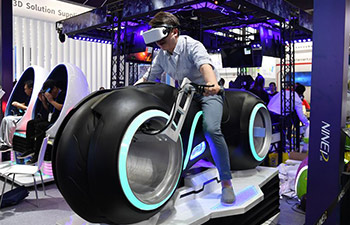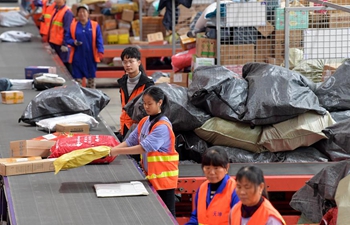CHICAGO, Nov. 15 (Xinhua) -- Researchers from Washington University School of Medicine in St. Louis have identified rogue cells, namely brain and muscle cells, lurking within kidney organoids.
Such cells make up only 10 to 20 percent of an organoid's cells, but their presence indicates that the "recipes" used to coax stem cells into becoming kidney cells inadvertently are churning out other cell types.
For the study, published Thursday in Cell Stem Cell, the researchers looked at two recipes used by scientists worldwide to grow kidney organoids.
One starts with embryonic stem cells approved for research by the National Institutes of Health (NIH), and the other begins with induced pluripotent stem cells, which are reprogrammed from adult cells and have the ability to develop into any type of human cell.
A cocktail of drugs and growth factors are added to the stem cells, channeling their development into kidney cells.
After growing the organoids in the lab for four weeks, using single cell RNA sequencing, the researchers analyzed the activity of many thousands of genes in 83,130 cells from 65 kidney organoids.
Regardless of the recipe, the researchers found that 10 to 20 percent of the cells in the organoids missed the cue to develop into kidney cells and instead became brain and muscle cells.
However, by reconstructing the step-by-step process by which stem cells developed into brain cells, they were able to see precisely where things went off the rails and block the formation of off-target cells.
This reduced the number of brain cells by 90 percent, and the approach provides a road map to help other scientists eliminate rogue cells in other types of organoids.
"Progress to develop better treatments for kidney disease is slow because we lack good models," said senior author Benjamin D. Humphreys, director of the Division of Nephrology.
"We rely on mice and rats, and they are not little humans. There are many examples of drugs that have done magically well at slowing or curing kidney disease in rodents but failed in clinical trials. So, the notion of channeling human stem cells to organize into a kidney-like structure is tremendously exciting because many of us feel that this potentially eliminates that 'lost in translation' aspect of going from a mouse to a human."
In the United States, nearly 500,000 people receive dialysis for end-stage kidney disease.

















